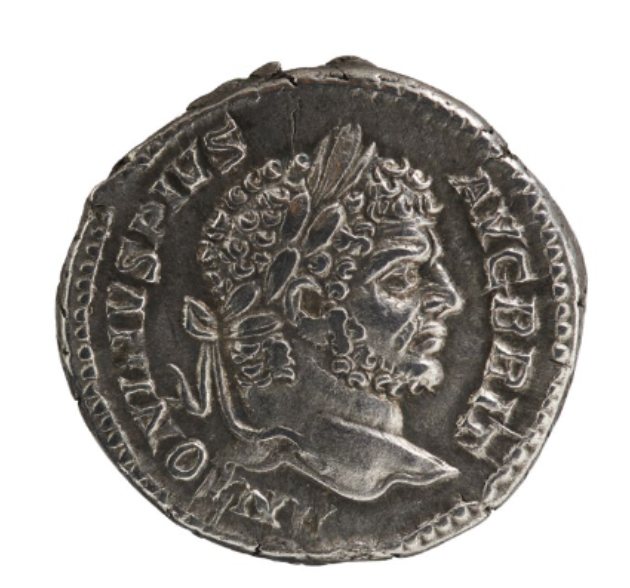Abstrakt
This paper explores elements of imperial propaganda during the reign of Caracalla, using the example of the famous Warsaw Relief from the Gallery of Ancient Art, as well as Roman coins from the collection of the Department of Coins and Medals at the National Museum in Warsaw. It examines the history and dating of the relief and discusses its analogies. The author analyses iconographic elements such as the crowning, the trophy and captives, as well as the presence of Victoria/Venus Victrix, by comparing these motifs with those found in Roman art, imperial and provincial coinage, and their symbolic significance. This paper also presents the figure of Emperor Caracalla and the image he sought to create through propaganda and political manoeuvres. Additionally, it examines the role of Julia Domna in the politics and propaganda of the Severan dynasty. The author demonstrates that all these elements formed part of a coherent strategy, aimed at enhancing the image of an emperor who, according to contemporary historians, was regarded as a tyrant.
Bibliografia
Balbuza Katarzyna, Triumfator. Triumf i ideologia zwycięstwa w Starożytnym Rzymie epoki cesarstwa (Poznań, 2005).
Cassius Dio, Roman History (Books LXXIII–LXXX), tr. Earnest Cary, Herbert Baldwin Foster (Cambridge, 1968), [online facsimile], https://penelope.uchicago.edu/Thayer/E/Roman/ Texts/Cassius_Dio/78*.html [retrieved: 31 Jan. 2025]
Dziurdzik Tomasz, Marciniak Maciej, ‘Defeat the Carpi and Scorn Everybody Else: a Triumphal Relief in the National Museum in Warsaw and the Appropriation of Propaganda Motives as Strategy for Dealing with a Nonconforming Emperor’, in In honorem Constantin C. Petolescu, eds Dorel Bondoc, Călin Timoc (Craiova, 2023), pp. 132–141, https://academia.edu/120868339/Defeat_the_Carpi_and_Scorn_Everybody_Else_A_Triumphal_Relief_in_the_National_Museum_in_Warsaw_and_the_Appropriation_of_Propaganda_Motives_as_Strategy_for_Dealing_with_a_Nonconforming_Emperor [retrieved: 22 Feb. 2024].
Hannestad Niels, Roman Art and Imperial Policy (Aarhus, 1988).
Hanson Victor Davies, The Western Way of War: Infantry Battle in Classical Greece (Berkeley, 2009).
Janiszewska Daria, Wojna domowa w Rzymie w latach 193–197 (Kocewia Mała, 2022).
Jaworski Piotr, ‘Antyk w Królikarni. Architektura i zbiory artystyczne’, Rocznik Historii Sztuki, vol. 29 (2004), pp. 203–239.
Kienast Dietmar, Römische Kaisertabelle: Grundzüge einer römischen Kaiserchronologie (Darmstadt, 2004).
Kleiner Fred S., A History of Roman Art (Boston, 2010).
Lusnia Susann, ‘Julia Domna’s Coinage and Severan Dynastic Propaganda’, Latomus, vol. 54 (1995), pp. 119–145.
Łukaszewicz Adam, Caracalla in Egypt (A.D. 215–216) (Warsaw, 2021).
Mann Charlotte, ‘The significance of the military representation of Caracalla upon the coinage of his sole reign (212–217 CE)’, Journal of the Numismatic Association of Australia, vol. 28 (2017), pp. 54–65, https://numismatics.org.au/wp-content/uploads/2021/06/naa-journal-vol-28-mann.pdf [retrieved: 22 Feb. 2024].
Melone Colleen, ‘Pushing the Limit: An Analysis of the Women of the Severan Dynasty’, Honors Project, 5 (2015), https://digitalcommons.iwu.edu/grs_honproj/5 [retrieved: 12 Jan. 2024].
Mikocki Tomasz, ‘Sub speciae deae atque dei: rodzinne uwarunkowania żeńskich asymilacji z bóstwami w Starożytnym Rzymie’, Studia i Materiały Archeologiczne, vol. 9 (1992), pp. 73–89.
Okoń Danuta, ‘Iulia Augusta Mater w świetle badań epigraficznych’, Przegląd Zachodniopomorski, vol. 26 (56), fasc. 2 (2012), pp. 7–16.
Panaite Adriana, ‘Tropaeum Traiani. From Municipium to Civitas. A Hypothesis’, in Moesia et Christiana. Studies in Honour of Professor Alexandru Barnea, eds Adriana Panaite, Romeo Cîrjan, Carol Căpiţă (Brăila, 2016), pp. 163–172, https://www.academia.edu/21910453/Tropaeum_Traiani_from_civitas_to_municipium_a_hypothesis [retrieved: 22 Feb. 2024].
Sadurska Anna, Corpus Signorum Imperii Romani, Pologne I: Les portraits romains dans les collections polonaises (Warsaw, 1972).
Sarnowski Tadeusz, ‘Une tete de Caracalla découverte a Novae’, Archeologia, vol. 30 (1981), pp. 149–163.
Smyk Anita, ‘Julia Domna w polityce dynastycznej Septymiusza Sewera – wprowadzenie do problematyki’, Officina Historiae, vol. 2, no. 1 (2019), pp. 21–27.

Utwór dostępny jest na licencji Creative Commons Uznanie autorstwa 4.0 Międzynarodowe.
Prawa autorskie (c) 2024 Tomasz Teinert (Autor)


